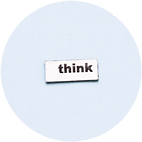-Memorizing personal pronouns and verb conjugations can be easy.
-How?
-Through repetition and practice. Here are some strategies:

- Flashcards: Create flashcards with the pronouns on one side and their corresponding verb “be” conjugations on the other. After, quiz yourself regularly using these flashcards until you remember them well.
- Mnemonics: Create mnemonic devices or associations to link each pronoun with its corresponding conjugation. For instance, for “I am,” you might create a phrase like “I am eager” to remember the conjugation for “I.”
- Practice with Sentences: Write sentences using each pronoun with the verb “be” in the simple present tense. For example:
- I am a student.
- You are tall.
- He is happy.
- She is a doctor.
- It is sunny.
- We are friends.
- They are funny.
- Verb Charts: Use verb charts or tables that list out the conjugations of the verb “be” for each pronoun in the simple present tense. Repeat these aloud or copy them down to reinforce your memory.
- Verbal Repetition: Repeat the pronouns and their corresponding conjugations out loud. This verbal repetition can reinforce memory through auditory cues.
- Associate with Daily Activities: Relate the pronouns and conjugations to your daily life or activities. For example, associate “I am” with actions you do regularly, such as “I am eating,” “I am studying,” etc.
- Quizzes and Games: Use online quizzes or games related to pronoun and verb conjugation practice. Interactive exercises can make the learning process more engaging.

Remember, consistent practice and exposure to these pronouns and conjugations in various contexts will help reinforce your memory and familiarity with them over time. Now, let’s go back to Lesson Four , but only if you did learn Simple Present Verb Be and Personal Pronouns.

